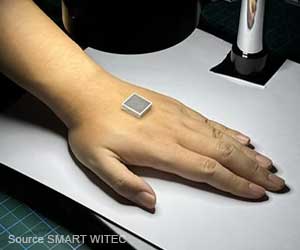The control system for powered prosthetic leg understands the intentions of the wearer and automatically adjusts its motions to fit with patients needs.

To maximize benefit from these devices and ensure patient safety, control systems must automatically identify which ambulation mode the patient is using and provide the correct prosthesis response.
The control system developed at the Rehabilitation Institute of Chicago understands the intentions of the wearer and automatically adjusts its motions to fit with where and how the person is walking. The system is based on electromyography sensors positioned over the muscles of the remaining leg. The signals collected by the sensors are fed into a computer that aggregates them and deduces the wearer’s intentions.
The activation of the prosthesis is completely natural and intuitive for the user because the signals come from the very muscles that used to move the original appendage. The system also uses pattern recognition algorithms to predict the next stride and adjusts accordingly to produce the kind of step the wearer intends.
Source-Medindia
 MEDINDIA
MEDINDIA




 Email
Email





